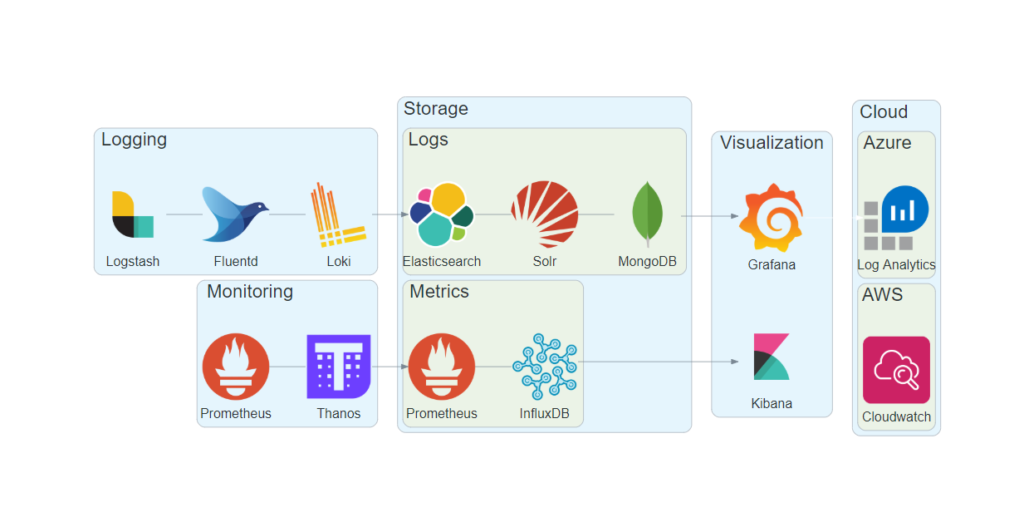Steve Jones tries out some of the Azure Architecture Icons:
The icons are svg, so while they work in PowerPoint, adding them to something like this post in OpenLiveWriter doesn’t work. However, I could make a quick diagram and capture an image of it.
Not great, but it shows I can put icons on a page with arrows.
Going one step further, I’ve been digging into Diagrams by mingrammer lately. With it, you use Python to generate diagrams, and there are quite a few Azure icons in there, as well as AWS, on-prem, etc.
Here’s a quick example of what you can do, taken from an upcoming talk of mine:

There are some limitations based on the underlying library, such as how you can’t connect cluster to cluster—meaning I can’t draw a line from “Logging” to “Storage\Logs”; I have to draw it from a particular element (Loki) to a particular element (Elasticsearch). In a lot of traditional reference architecture diagrams, though, that isn’t a problem.
Comments closed